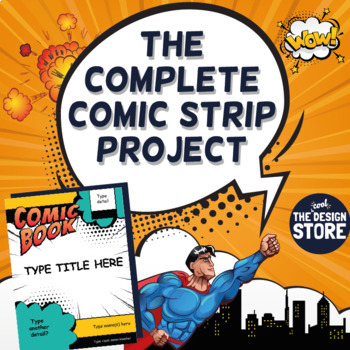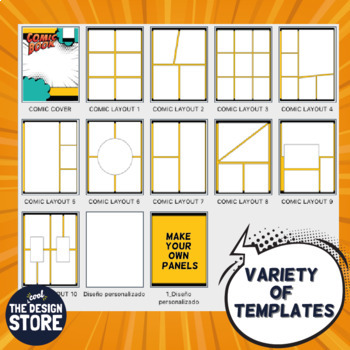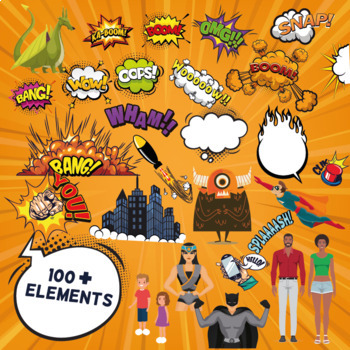The Comic Book Project with Template & Strips | ELA Narrative Writing Assignment
- Zip
- Google Apps™

What educators are saying
Description
Student Avengers Assemble!
Help bring out the creativity in your students with this modern digital version of the comic strip project. Watch student engagement soar and eliminate prep time, as this includes everything you and your students will need— tons of premade comic strip templates and drag-and-drop elements! Just copy and paste the elements provided onto one of the stip templates and let your imagination run wild!
It's designed to be used across grade levels, and subjects, and can act as a great way to offer differentiated support for classrooms with ELLs (English Language Learners).
These comic strips can be used in various ways, such as:
- The final project in a narrative writing unit
- Retelling or adapting a story
- Demonstrating comprehension of a book / textbook chapter
- Explaining a scientific process
- Showing a famous historical scene
- And I'm sure countless other creative ways : )
This Activity Includes: A PPT + A Google Slide Version
- A cover page (designed to look just like a real comic book!)
- A story map page (Fully editable by you and your students)
- 11 comic strip templates / backgrounds (10 different set panel styles + 1 empty - allowing students to create their own panel types)
- 100+ different comic elements (characters - superheroes - monsters - animals - speech bubbles - symbols - sound effects)
- 2 versions: Horizontal & Vertical (film style - printing version)
Notes:
* Every element can be resized
* The panels are on a master slide so they can't be resized (allowing your students to easily copy and place elements on the panels)
* Your student can also add their own elements or photos.
* This doesn't include specific assignment instructions for the students as it's designed to be used in a variety of different subjects and project ideas.
If you found this useful please leave me a review. Plus, I'd love to hear how you used this in your classroom : )
Like what you see? Check out my other resources!
⭐ Character Creation & Narrative Writing Activity - Digital & Print Mini Project
⭐ Halloween Stories and Narrative Building Activity - Storyboarding
⭐ Christmas Digital Project - Character Social Media Profile Builder
⭐ The Gratitude Journal Digital Project - Thanksgiving Mini Project
⭐ Interactive Digital Notebook
⭐ Class Awards / All Year Certificates (English & Spanish)
⭐ Student Feedback and Reward Digital & Print Stickers
⭐ Cool Google Classroom Headers Bundle
*******************************************************************
You can follow me by clicking here :)
*******************************************************************
Preview & Resource Elements Credit: Freepik





